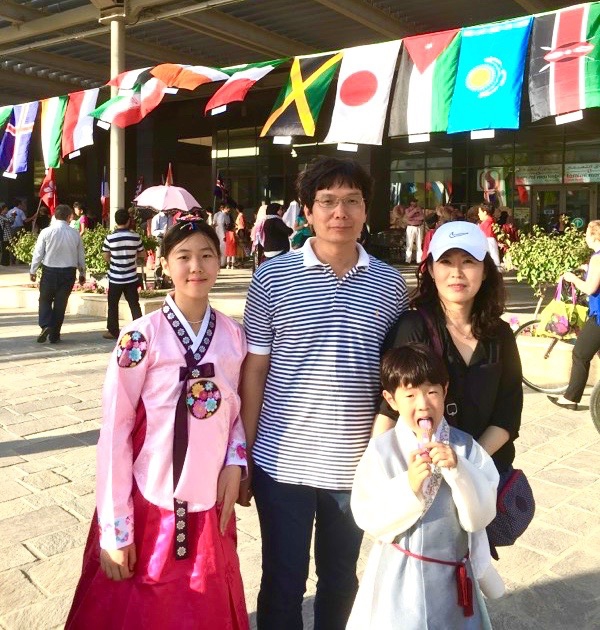.jpg?sfvrsn=39330263_0)
.jpg?sfvrsn=39330263_0)

26 May, 2016
When scientists and researchers talk about history, it is often in terms of a specific experiment that lasts hours, days, or perhaps just a couple years. But a visiting professor is spending a year at the Ali I. Al-Naimi Petroleum Engineering Research Center (ANPERC) to help explain the history of oil and gas reservoirs and their development over the last 500 million years.
Associate Prof. Hosung Shin, University of Ulsan, South Korea, is working at KAUST with Professor Carlos Santamarina of ANPERC to develop an innovative numerical model that helps explain the history of oil reservoirs and the process of oil production.
“Commercial codes are for general purposes,” said Shin, explaining the limitations of off-the-shelf numerical models commonly used in the oil and gas industry to understand reservoirs at a basic level. “But sometimes we cannot solve a specific problem using a commercial code, hence, we are developing a Thermo-Hydro-Chemo-Mechanical (THCM) coupled process code using the Finite Element Method (FEM) to understand properties and reservoir response in fractured porous media.”
Shin has been working on developing the THCM code since he graduated six years ago from Georgia Tech in Atlanta. Since that time, he has traveled to meet with Santamarina every year to discuss the progress and challenges of advancing this code.
This time, he is spending his entire sabbatical visiting KAUST accompanied by his family from South Korea. “We feel very comfortable here. If I moved anywhere else, it would take at least two months to settle but it’s very convenient here at KAUST. My house is one block away from the school my kids attend. Everything is easily accessible, it’s very convenient.”
“I love being here and have made great friends at school and have amazing teachers,” said Jiwon, Shin’s daughter, who is in seventh grade at KAUST School. “I also have a lot of after school sports of which I have joined badminton and it’s a lot of fun!”
 Shin’s wife Jung Somin added, “It’s a very nice community. We attended the Flavors Festival and the Parade of Nations. It
Shin’s wife Jung Somin added, “It’s a very nice community. We attended the Flavors Festival and the Parade of Nations. It  was a great experience to witness multiple cultures and try their food.” Their son, Matthew, a first grader, was homesick at the beginning and “missed his friends and toys,” said his mom – but not anymore.
was a great experience to witness multiple cultures and try their food.” Their son, Matthew, a first grader, was homesick at the beginning and “missed his friends and toys,” said his mom – but not anymore.
Since settling into the community, Shin has enjoyed the dynamic research environment at KAUST and has made significant progress in the model’s development. The idea is to use a combination of reservoir related physics, putting all those equations into the numerical space of a computer program and letting it simulate the evolution of the reservoir over time. “We will insert the physics and boundary conditions to let the computer track the historical evolution,” explained Santamarina.
Talking about the importance of this model, Shin said that the simulations of coupled processes are often treated as separate processes, which is far removed from reality. He uses an example of the typical person’s daily life, in which you sleep, eat and work. If you experience disrupted sleep, it can impact other aspects of your life like your performance at work. It wouldn’t make sense to analyze your work performance without considering how the disrupted sleep played a role. However, this is exactly what typical commercial simulators do: analyze thermal, chemical, hydro, and mechanical factors separately. “Similarly, in the process of oil extraction, all processes like burial, heating, stress, compaction, fluid migration, tectonic forces and fracture formation, all of them coexist and mutually affect each other, hence should be treated together,” said Shin.
The professors are faced with various challenges in this project, which include scarcity of information on reservoirs and their geological histories. How stressed is it? How are pores interconnected that is, what is the geoplumbing of the subsurface? Research in this field is notoriously difficult and problems are inherently hard to frame. The goal is not to create the perfect model rather capture the essence in a robust simulator without missing anything important.
Apart from the project, Shin is also involved with mentoring PhD students at ANPERC to produce joint publications. It is expected to be a symbiotic relationship, benefitting both parties simultaneously.